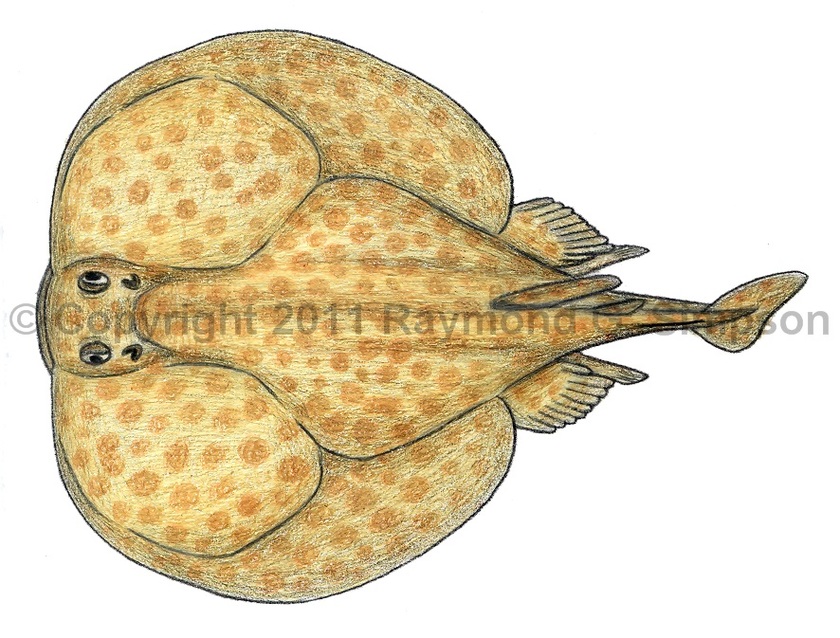
Common Name
Caribbean Torpedo
Year Described
Bullis, 1962
Identification
A very small species compared to other Atlantic members of the family. Disk oval and thickened in cross-section. Snout slightly projecting. Eyes close to anterior margin. Spiracles with a single to a few small papillae. Mouth with ~16 rows of teeth. Electric organs visible as large lumps in the anterior portion of each pectoral fin. Tail short and stumpy. Pelvic fins rounded and project beyond rear disk to level of first dorsal fin. There are two dorsal fins positioned very near each other: the first being much larger than the second. Caudal fin slightly emarginate with rounded upper and lower lobes. Low skin folds on side of tail. Skin entirely smooth. Claspers in males thick and stumpy; reaching caudal fin base.
Color
Dorsum yellowish brown with numerous red-brown blotches and spots of varying sizes and shapes covering disk and tail. Ventrum white to cream.
Size
Maximum size to 31cm TL.
Habitat
Most observations have occurred in shallow water on or around coral reefs, but the original material was taken at a depth of 230m on the continental shelf. Can deliver a weak electric shock.
Range
Scattered records from the Florida Straits, the Cayman Islands, Cozumel Island, and off Nicaragua. Probably widespread in the Caribbean Sea.
References
Last, P.R., White, W.T., Carvalho, M.R. de, Séret, B., Stehmann, M.F.W & Naylor, G.J.P (Eds.). 2016. Rays of the World. CSIRO Publishing, Melbourne.
Other Notes
Easily distinguished from Tetronarce by a combination of small size, mottled pale coloration, and the papillae on the spiracles.